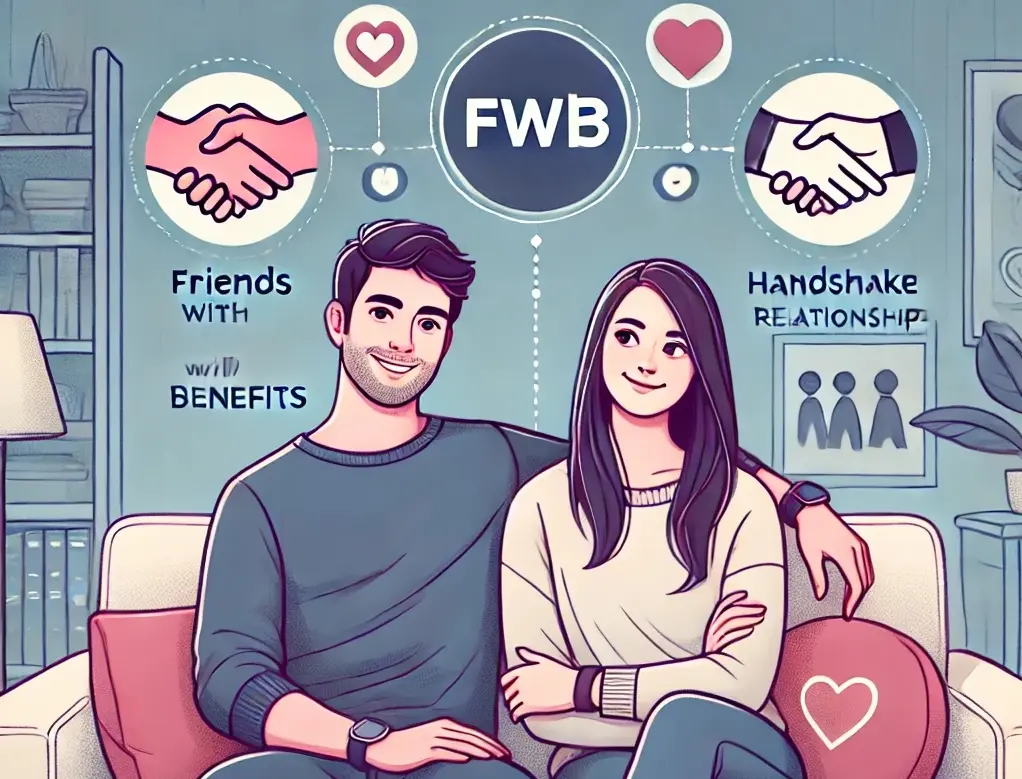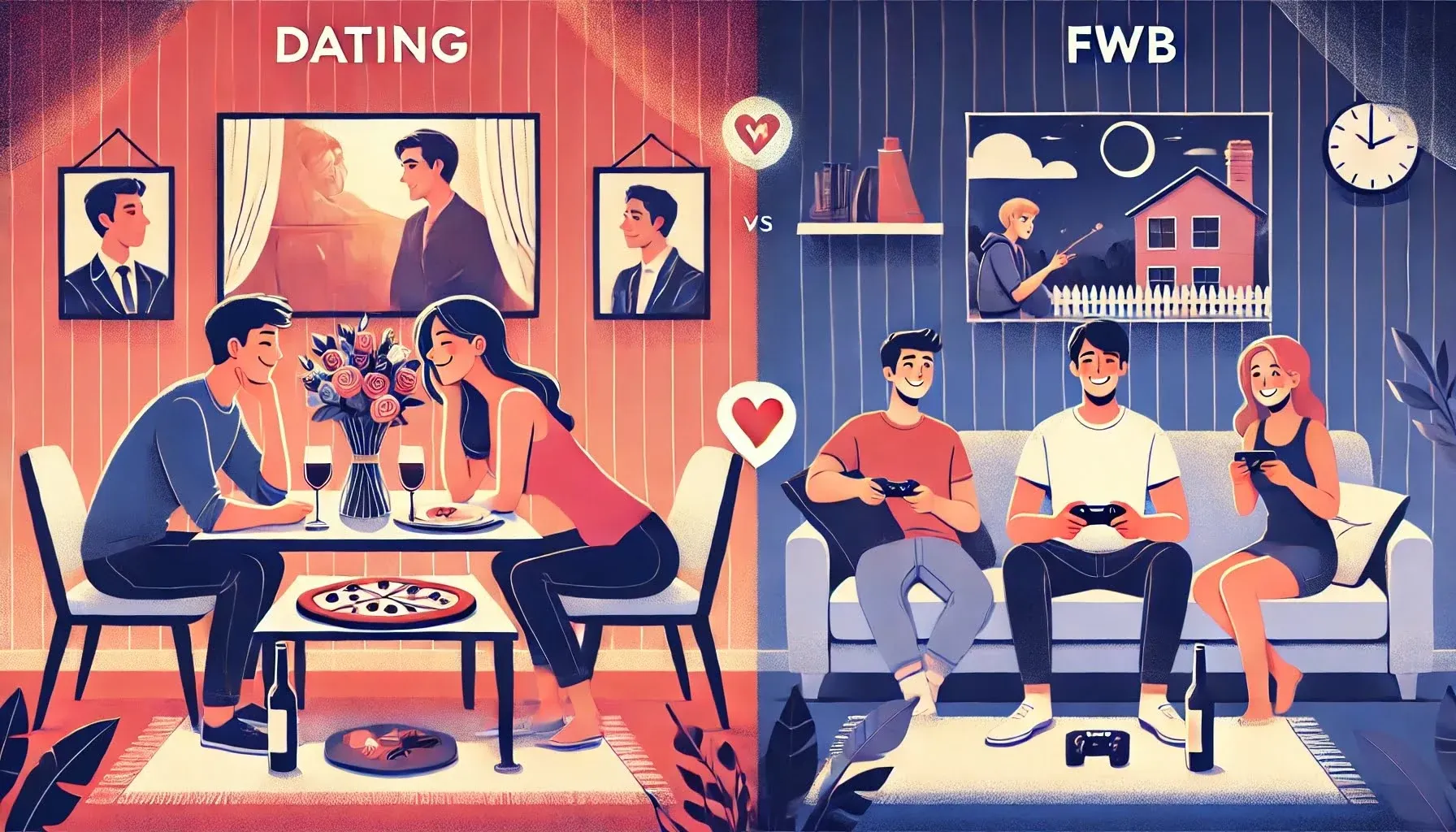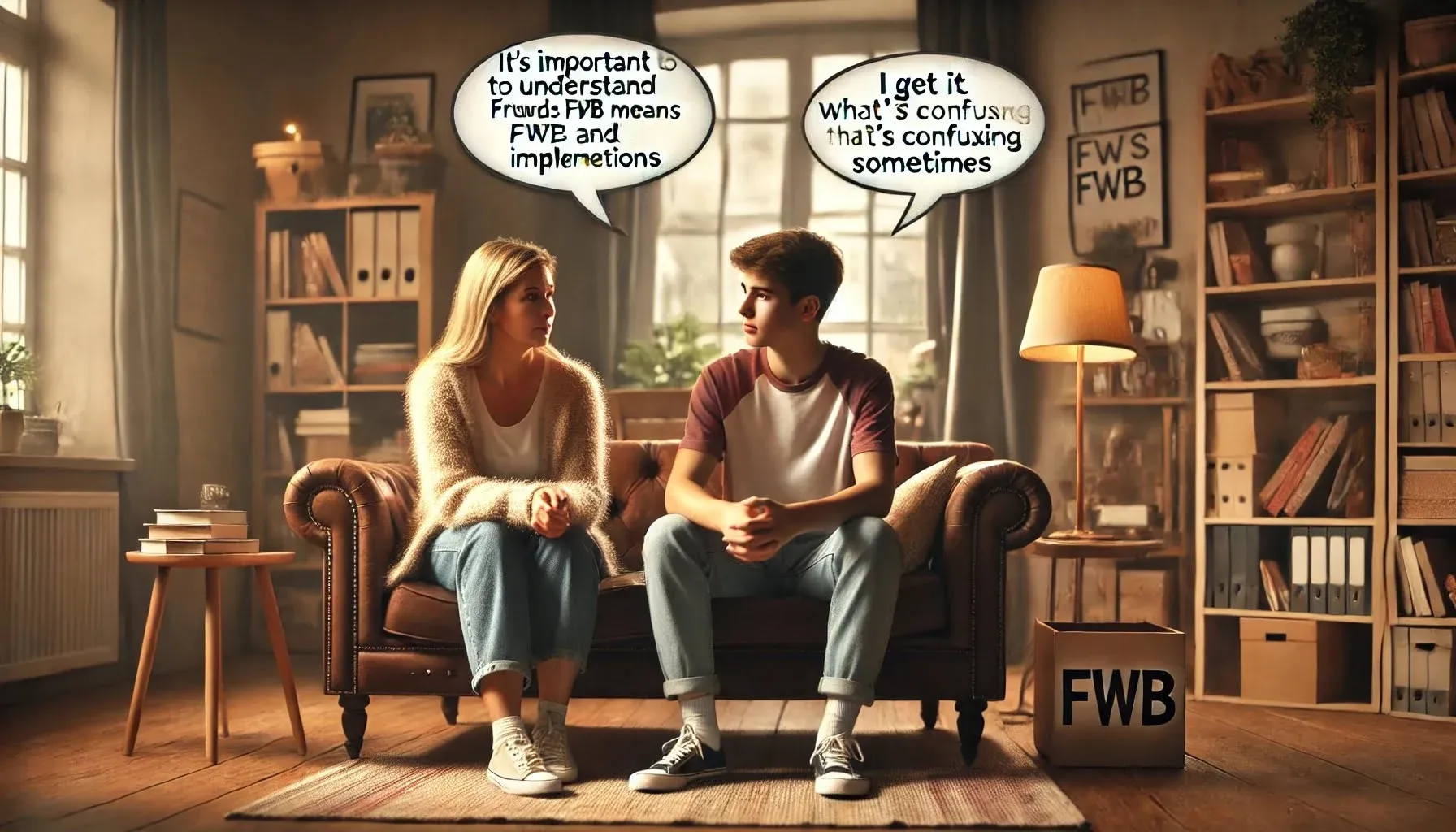What does FWB mean? Origin, Extension, Use Cases & More

Last updated:7월 29, 2024
Table of content
Part 1. What does FWB mean
FWB, or "Friends with Benefits," refers to a sexual/intimate relationship between two people who are friends, intentionally avoiding the emotional commitment usually associated with romantic partnerships. Imagine keeping your friendship intact but adding a physical element to it, all without the commitment and emotional baggage typically tied to dating.
FWB relationships can be as varied as the people involved. For some, it means regular hook-ups, while for others, it’s more about those occasional meet-ups. The big thing here is that both parties are on the same page.
Effective communication and clear friends with benefits rules are crucial to maintaining a smooth and respectful arrangement. Respecting each other’s boundaries and being honest about what you want helps prevent any awkward moments or hurt feelings.
It’s also helpful to know the difference between FWB and other casual arrangements, like situationships, where emotional boundaries and expectations can shift.
Part 2. Origin of FWB slang
The term "Friends with Benefits" emerged in popular culture during the late 20th and early 21st centuries. Its origins are somewhat ambiguous, but it gained widespread recognition through its frequent use in television shows, movies, and popular music.
The phrase captures the essence of a non-traditional relationship structure that became more socially acceptable as societal norms around dating and relationships evolved. Understanding FWB meaning helps contextualize these shifts in societal attitudes.
One of the earliest notable mentions of FWB in mainstream media was in the 1990s. The concept was humorously explored in television sitcoms and romantic comedies, reflecting the shifting attitudes towards casual relationships.
The rise of internet culture and online dating also contributed to the popularization of the term, as people sought new ways to describe their evolving relationship dynamics. Distinguishing between FWB and situationship became essential as these terms entered the common lexicon.
The acceptance of FWB relationships can be attributed to a broader cultural shift towards more open and diverse views on love, sex, and companionship.
As people began to challenge traditional notions of monogamy and long-term commitment, terms like FWB provided a vocabulary for these new forms of relationships. The media played a significant role in normalizing and disseminating the concept, making it a common part of contemporary relationship discourse.
Part 3. Extension: difference between dating and FWB
Many parents may be confused about the difference between dating and FWB (Friends with Benefits). Although both involve two people spending time together, they differ significantly in terms of commitment, emotional involvement, and expectations.
Understanding these distinctions is crucial, especially for parents trying to navigate conversations with their teenagers. In a romantic relationship, dating typically involves emotional intimacy, mutual commitment, and the intention of building a future together.
Dating partners often prioritize each other’s needs, share life experiences, and seek a deeper emotional connection. The relationship evolves with expectations of exclusivity and long-term partnership.
In contrast, FWB dating focuses primarily on the physical aspect of the relationship while maintaining a platonic friendship. FWB relationships adhere to specific FWB rules, where both parties agree to engage in sexual activities without emotional ties or commitments.
The primary goal is to enjoy the benefits of a sexual relationship without the responsibilities and expectations of a romantic relationship. Unlike casual dating, which might still involve some level of emotional connection and potential for a future together, FWB relationships clearly define boundaries to avoid complications.
It's essential for parents to understand these differences to guide their children through the nuances of modern relationship dynamics. Clarifying the concept of FWB vs dating can help parents address their concerns and provide appropriate advice.
Part 4. How do teenagers use FWB slang? Examples
Teenagers often use FWB slang to describe their non-committal relationships, reflecting the evolving nature of modern dating culture. This slang is typically used to communicate the boundaries and expectations of a Friends with Benefits relationship.
For instance, teens might use the term “FWB” to clarify that their relationship is purely physical and not romantic.
Here is how teenagers use FWB:
Example 1:
- Teen 1: "I noticed you and John are hanging out a lot. Are you officially dating now?"
- Teen 2: "No. Actually, we’re FWB.
Example 2:
- Teen 1: "What’s your strategy for keeping things clear in a FWB situation?"
- Teen 2: Because of our FWB rules. We hang out and have fun, but we don’t do anything that feels too serious."
These examples show how FWB slang is used to define relationship boundaries and expectations clearly. The distinction between casual dating vs FWB is crucial in these conversations, as it helps teens manage their relationships without misunderstandings.
Understanding the usage of FWB slang can help parents better communicate with their children about their relationships. It allows parents to discuss the differences between a romantic relationship vs friends with benefits and provide guidance on maintaining healthy and respectful interactions.
Part 5. How to talk with your child about FWB
Discussing Friends with Benefits (FWB) with your child requires sensitivity and openness.
- Start by creating a safe space where your child feels comfortable sharing their thoughts and experiences without judgment. Use clear language to explain the concept of FWB, emphasizing the importance of mutual consent, respect, and clear boundaries.
- Discuss the potential emotional and physical risks involved, and encourage your child to communicate openly with their FWB partner.
- Highlight the differences between FWB and romantic relationships, stressing the need for honesty to avoid misunderstandings.
- Lastly, remind your child that it's okay to change their mind and prioritize their well-being over any relationship dynamics.
Part 6. Final Words
Understanding what FWB means and its origins helps clarify the term's role in modern relationships. By distinguishing between FWB and dating, and seeing how teens use FWB slang, you can navigate these relationships with greater insight. This knowledge helps you make informed choices and maintain healthy interactions in your personal life.
More Articles Like This




